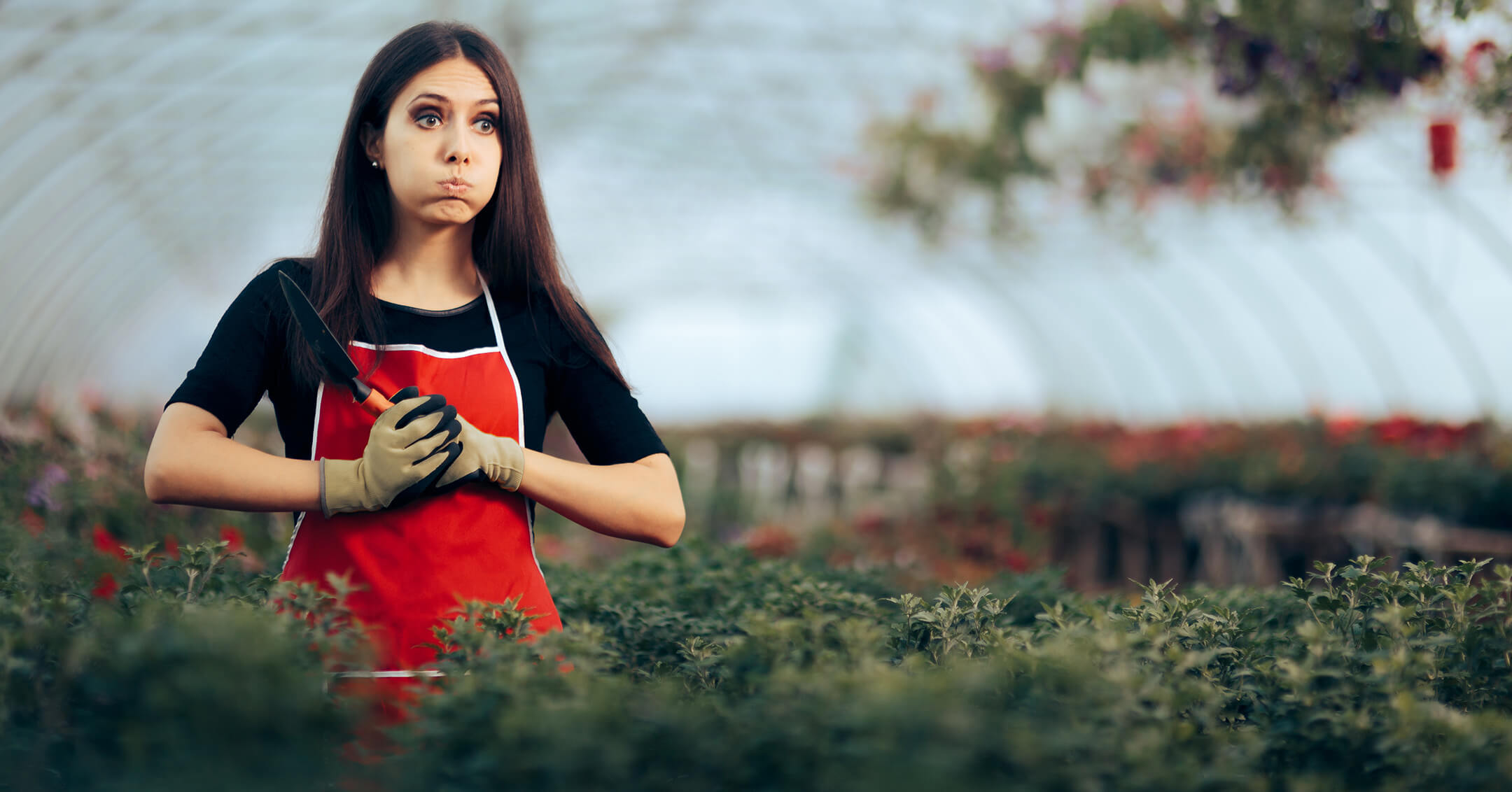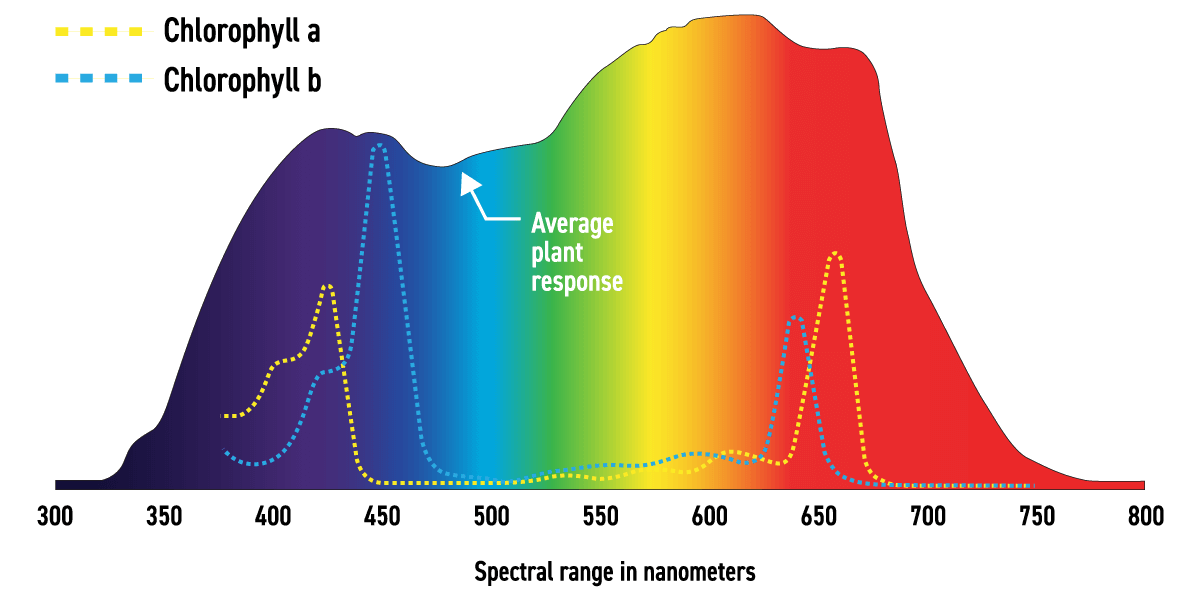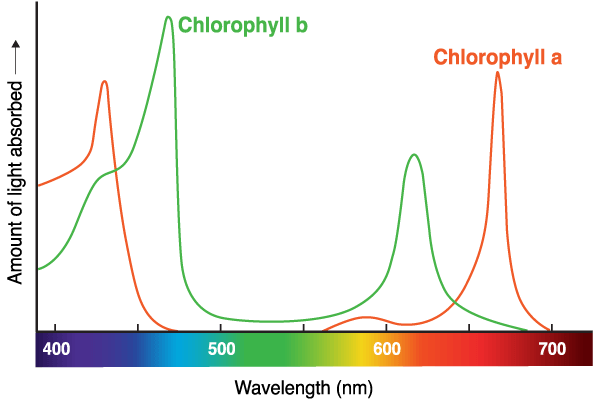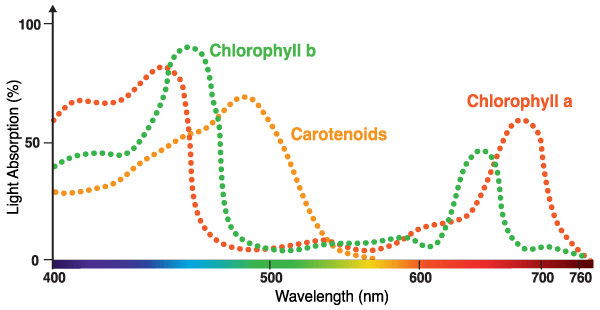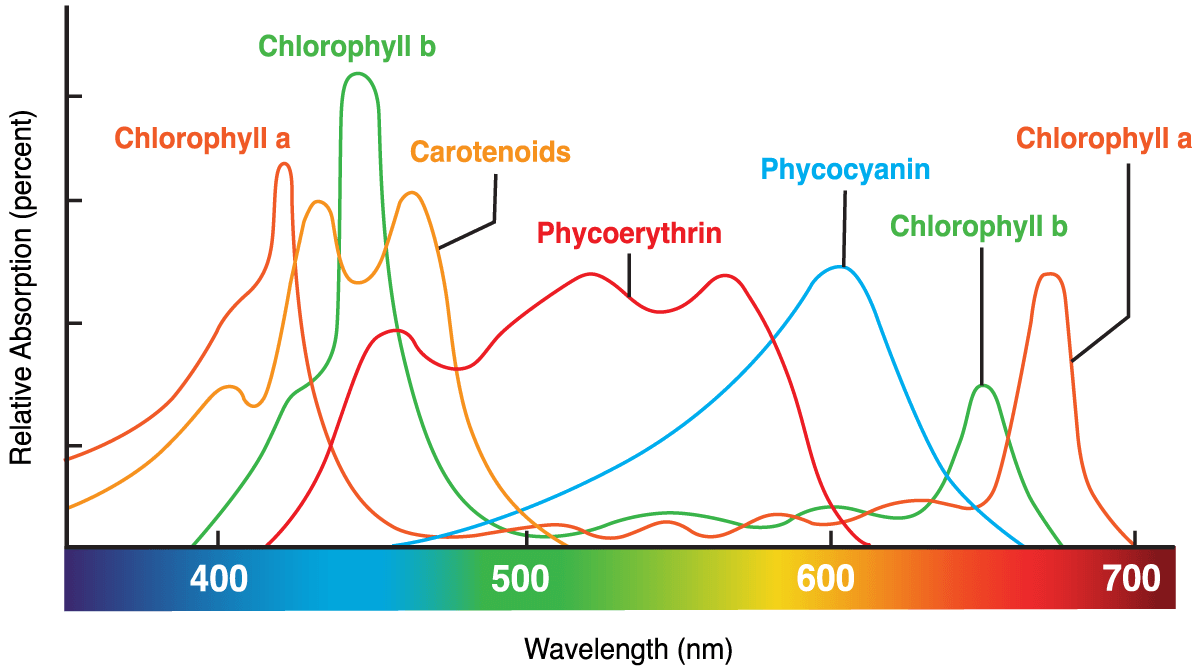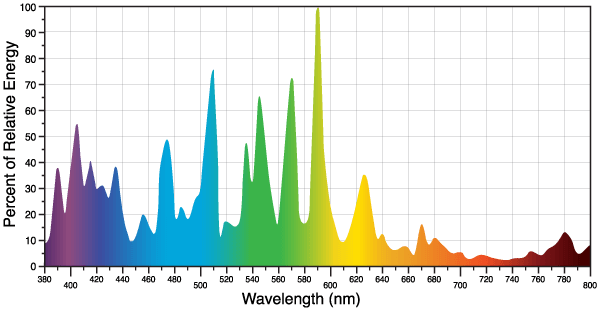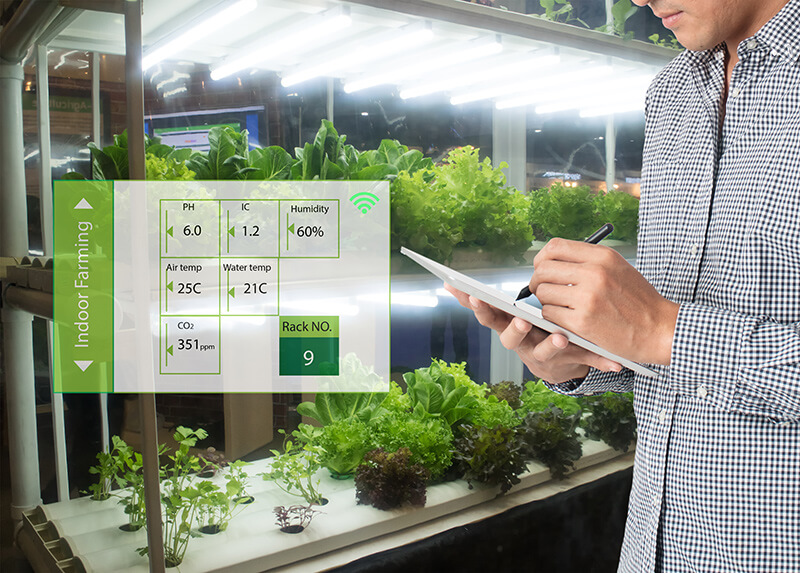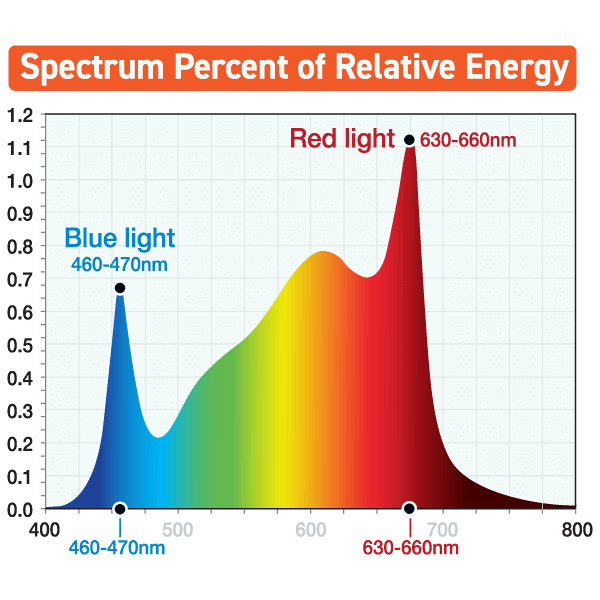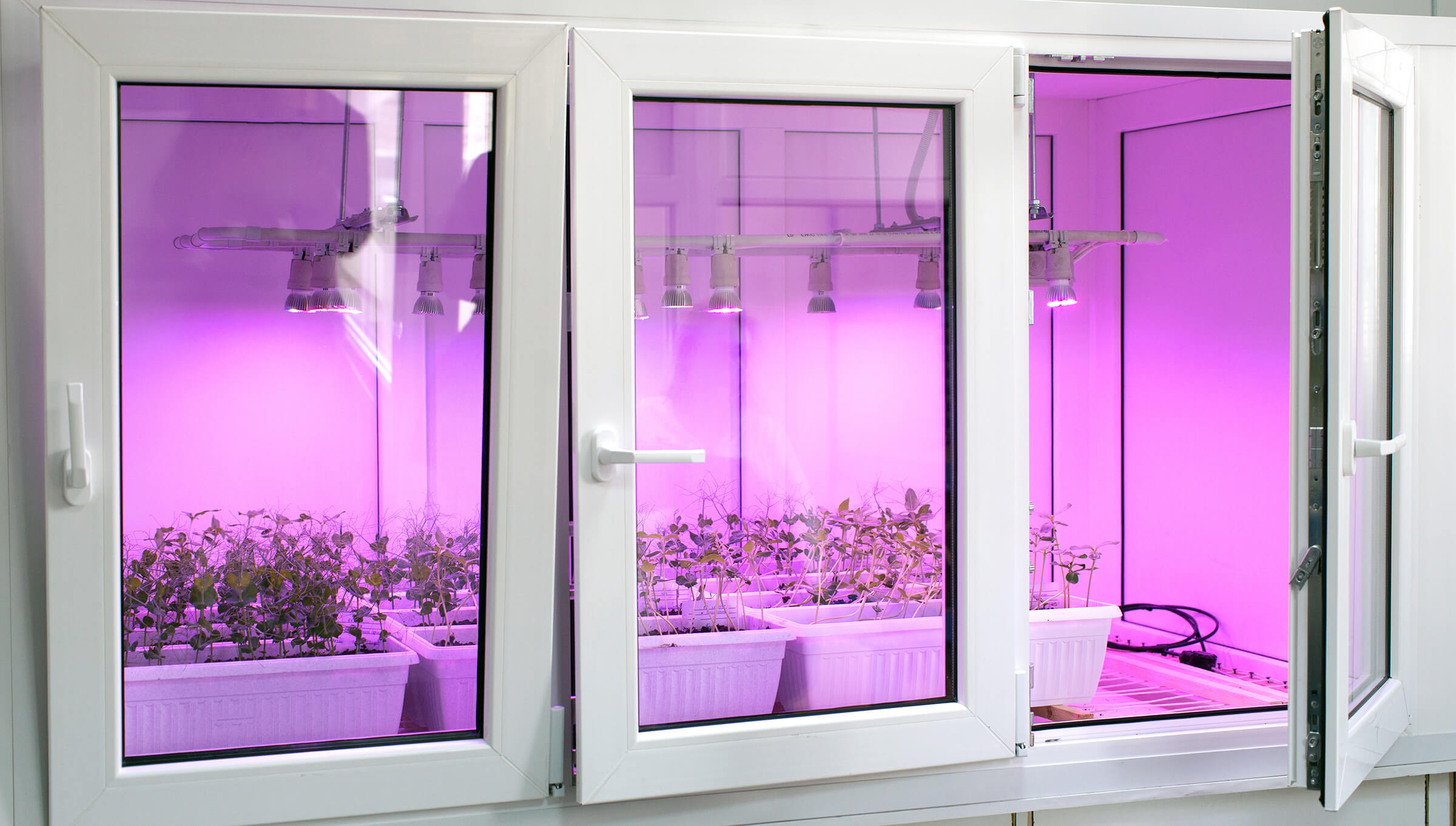The right light spectrum for plant growth
The PPFD and watts used are not the only LED grow light features you need to consider. What about the grow light’s spectrum? Is it the right PAR spectrum for your plants?
Searching online for “The right PAR spectrum for my plants” will make one thing clear. The number of different spectral outputs promoted as the ideal plant growth spectrum is confusing. Why is finding the right light spectrum for plant growth so difficult?
Reporting of early research in artificial lighting and photosynthesis led to a widespread misunderstanding. The myth is that the 400-500nm (Blue) and the 600-700nm (Red) wavelengths were solely responsible for photosynthesis in plants.
By ignoring the details and popularizing a simple but inaccurate summary, sneaky lighting manufacturers created a secondary market for themselves. Meanwhile, horticulturists and indoor gardeners spent the next few decades using primarily Blue and Red spectrum lighting on their crops.
The flowering stage would be reversed, receiving more light from primarily Red light sources. Like HID high-pressure sodium lamps, which helped increase height and flower development. This strategy involved an elaborate room and lamp swapping system to compensate for the plant's growth stage and photoperiod.
Production costs were high. The high-powered HID systems were electrically inefficient and costly to operate. In addition, the excessive amounts of heat they generated would create micro-climate issues within the crop. As a result, heating, ventilation, and air cooling costs were high.
However, the effective LED grow lights remained too expensive for use on large-scale crops. And the underpowered but affordable red/blue fixtures sold to the public were as effective as Snake Oil.
Everything has changed over the last few years. Advances in horticulture research and knowledge sharing have returned the focus to what had been confirmed decades ago.
Higher plants can process a wide range of wavelengths into photosynthesis. Recent studies have shown the effects of emphasizing the ratio of specific spectrum wavelengths over others. And their positive or negative results.
Recognizing the role of the 500-600nm (Green) wavelength in plant growth did lead to significant improvements in plant growth lighting. But unfortunately, it also created some chaos within the industry.
On the one hand, Blue chips with phosphors added to create lighting for humans were mass-produced. These chips cover a broad spectrum from 400-700nM. So with some modifications to the chip layout and selection, they can create an optimal plant growth spectrum recipe. On the other hand, opportunistic lighting manufacturers created chaos by flooding the market with high-lumen warehouse lighting. Warehouse lighting delivers a strong PPF reading.
But the skewed ratio of the plant growth spectrum produces slow-growing plants with poor development. These products' flaws are less noticeable for hobbyist growers but are devastating for a commercial cultivator's investment.
How do you choose the right grow light spectrum?
Research on indoor plant growth through artificial lighting increasingly demonstrates there is no perfect PAR spectrum recipe.
Many other factors strongly influence a plant's ability to absorb and process different wavelengths. You need to consider the cultivation environment, the chosen production method, the nutrient schedule, and more.
The ideal strategy for LED plant grow lights is to select the best spectra for the specific crop. This improves quality in the most energy-efficient way. Achieving that perfect plant growth spectrum for a specific cultivar requires multiple trials under repeatable conditions.
Maximizing production output while reducing costs should be on the list of every successful business. However, testing and evaluating grow lights can take months, if not years, and is not cheap for a commercial cultivator.
Fortunately, optimal is not necessary to be profitable.
A sealed growth chamber with high-power LED grow lights fine-tuned to the cultivar's genetic DNA is not required. Quality grow lighting specifically built for plants and a reliable spectral recipe that benefits your crop is the key to success.
Selecting a plant growth spectrum
Blue and Red light are the driving force behind chlorophyll absorption and photosynthesis. Together, they cover Chlorophyll A and Chlorophyll B's absorption peaks. They are the base to creating a successful PAR recipe.
Under monochromatic light, either Blue or Red, natural plant growth suffers. Research suggests that a minimum of 7% Blue light is required to produce near-natural growth. In practice, a 25-35% Blue to Red light balance will grow a healthy plant.
Under monochromatic light, either Blue or Red, natural plant growth suffers. Research suggests that a minimum of 7% Blue light is required to produce near-natural growth. In practice, a 25-35% Blue to Red light balance will grow a healthy plant.
The “Green” spectrum and plant growth.
The importance of the 500-600nM (Green) spectrum for photosynthesis and plant growth is confirmed. At 24% or less of the spectrum, Green enhances plant growth. However, problems with excessive Green in the spectral ratio can stunt growth and plant morphology. Research shows that growth is slowed and stunted when Green is dominant at greater than 50% of the PAR spectrum.
In cannabis plants, THC levels are negatively affected by the presence of green light (Mahlberg and Hemphill, 1983; Magagnini et al., 2018)
The issue with green light is that it exerts an antagonistic effect on other blue light-induced responses, including stomatal closure (Frechilla et al., 2000) or anthocyanin accumulation (Zhang and Folta, 2012).
More pertinent to the cannabis industry, experiments where the Green:Red ratio was higher than 50% showed decreases in THC levels. You will maximize natural plant growth and health by balancing the B:G:R and the G:R spectral wavelength ratios.
Ambitious growers are experimenting with these wavelengths. They're pushing the boundaries of plant lighting in search of the optimum growth spectrum to produce super plants. The cannabis industry remains at the forefront of these experiments, with incredible anecdotal results presented daily via social media.
UV, Violet, and Far Red grow lights
Adding UV, Violet, and Far Red wavelengths outside of the 400-700nM range can have beneficial or disastrous effects on your crop. Results are dependent on the species and grow environment. For example, stunted growth or excessive elongation for some. Improved dry weight or increased plant oils for others.
The best grow light spectrum
For best results, a grow light should consist of a broad PAR spectrum. With a balanced ratio designed for optimal plant growth through all life stages.
At Grow Elite, we design and manufacture our own professional LED grow lights for anyone looking to produce high-quality and healthy plants.
Our grow lights are built to address quality, yield, and the balance between crop costs and profitability. Contact us now to discover the benefits of using Grow Elite full spectrum LED grow lights on your plants.
At Grow Elite, we design and manufacture our own professional LED grow lights for anyone looking to produce high-quality and healthy plants.
Our grow lights are built to address quality, yield, and the balance between crop costs and profitability. Contact us now to discover the benefits of using Grow Elite full spectrum LED grow lights on your plants.

